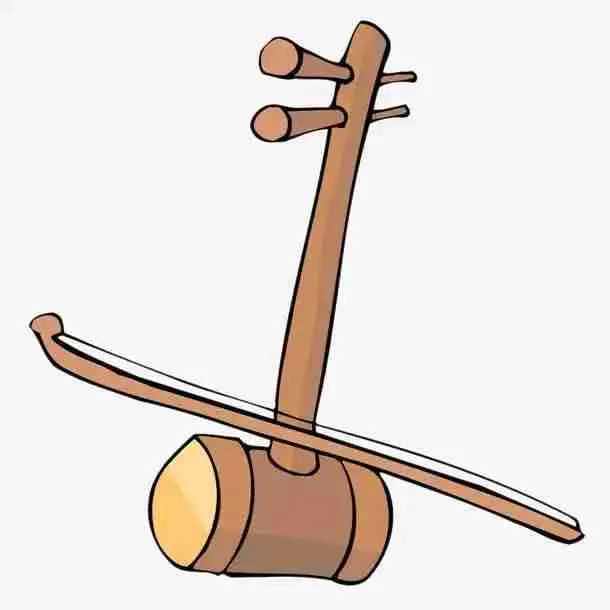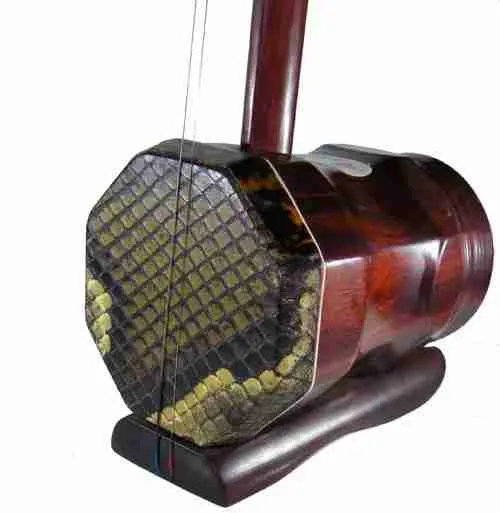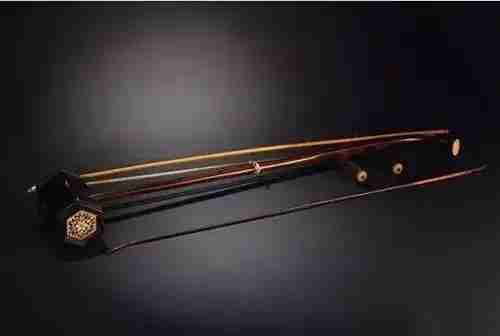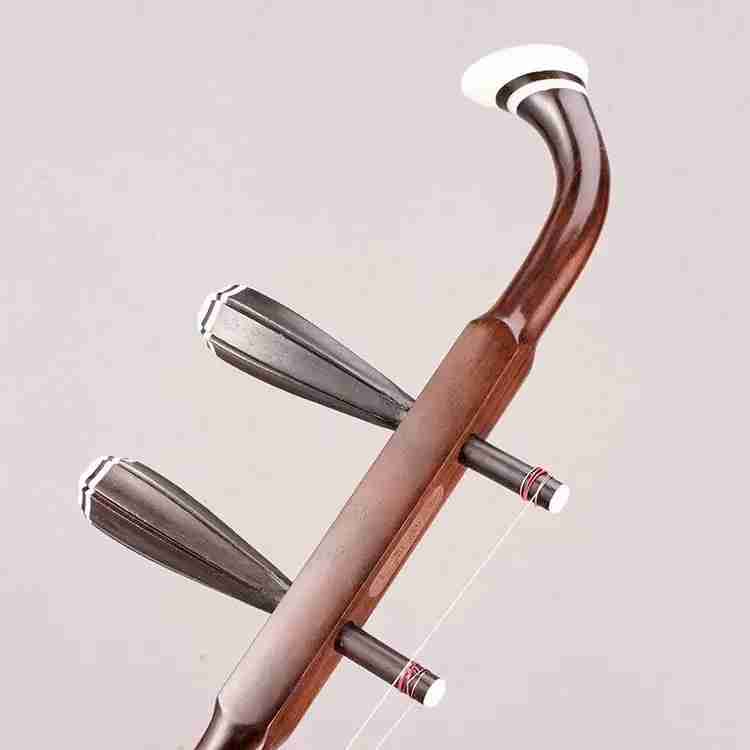If you love Chinese music, you are probably drawn to it for the unique soundscapes it presents – with the Erhu being responsible for much of it. The instrument is among the most important musical products from the country, with its history stretching back more than four millennia.
What does Erhu mean in Chinese?

The name of the instrument has two characters in Mandarin. The first character is thought to denote its two-string design, as well as the fact that it is the second highest-pitched instrument in Chinese orchestras after the gaohu, another Chinese stringed instrument.
Its second character is an indication that it originates from the huqin family of instruments, with Hu meaning ‘barbarians’, and showing its origins from the west or north of China where nomadic people lived.
What is erhu made of?
The instrument is comprised of a long neck that looks like a stick, with two tuning pegs at the top of the neck. At its bottom, you will find a small soundbox covered in python skin on its front end. Two strings attach from the base to the tuning pegs, and a small string known as Qian Jin is looped around the strings and neck to act like a nut while it holds a small wooden bridge.
There are various hardwoods used in its making, such as red sandalwood, black wood, and aged redwood.
What type of instrument is an erhu?
Erhu, also known as ‘the Chinese violin’, is a two-string bowed music instrument and is the most popular instrument in China’s traditional bowed string instruments known as huqin. Its popularity has allowed it to be useful in a wide range of folk songs and artistic output, despite its past reputation as ‘a beggar’s instrument’.
How to play erhu

Its unique design leads to some special features, which are:
- The python skin is responsible for its trademark sound, as the bow vibrates against it.
- The erhu does not have fret fingerboards, so instead, you press your fingertips on the strings without touching the neck. This is a challenging skill to master, but knowing it allows the player to create various tunes and emotions from the instrument.
- You will never separate the horsehair bow from the strings. Instead, the bow passes between them instead of over them like you would play a western string instrument.
- The instrument’s two strings have a very close positioning, so your hand plays as though it is a one-stringed instrument.
How you can make an Erhu

Most erhu you will find – including those played by professional musicians – are pre-assembled, as the process is quite complicated. However, if you want to make your DIY version, follow these steps to do so:
- Fixing the neck in the soundbox hole through the bottom. This hole’s shape is usually olive or oval, while the bottom hole is square or round. Ensure this fit is snug to achieve maximum accuracy when playing.
- Through the upper neck’s hole, push the first tuning peg, and then do so for the second tuning peg. Ensure the fit is snug, as well as check that the small ends are equal in length after you put the pegs in.
- Join the bottom of the soundbox to the base of the neck. In most cases, you will need to use a screw to fasten both parts.
To attach the strings
- Take the inner string and thread its loop-less end through the upper tuning peg’s hole until about an inch goes through. Ensure the string itself is over the lower tuning peg.
- Loop the end through the hole to avoid exposing its sharp point.
- Tighten the string by turning the peg gradually away from you. Do so until the string’s loop end is close to the erhu’s base where you will see two pins.
- Put the loop over the two pins and push it inwards to secure it. Tighten the string until you secure it due to the tension between the pin and the tuning peg.
- Repeat this process for the second string.
Erhu history
Where is erhu found?
During much of its history, it has existed as a folk instrument in the southern regions of China, while northern-based musicians preferred the sihu. However, it was introduced to Beijing in the 1920s by Liu Tianhua, a Chinese musician, and it eventually became the most popular instrument in its class.
When was erhu invented?
The exact time of its development is unclear, although it is widely accepted to have originated during the Tang Dynasty (between 618 to 907 AD).
During the Song Dynasty (960 to 1279), many musicians used it to compose their melodies and perform them, leading to its rising popularity among ordinary people. Its playing skill was passed down orally, with a few written records from the time talking about it.
It later went through an evolution during the Ming (1368 to 1644) and Qing dynasties (1644 to 1911) due to the increase of some art forms in the folk culture like local operas and cross-talks. There were additional developments in the 20th Century regarding its status in Chinese culture, which were:
- The First stage: between 1915 and 1949. These led to its modern development.
- The Second stage: between 1949 and 1979. It went through a boom in development due to China’s post-war period, the establishment of music academies throughout the country, and the infusion of its melodies with those from western music.
- The Third stage: from 1979 to 1999. There were innovations in the industry, with the erhu becoming an increasing feature in modern rhapsodies, narratives, and concertos.
- The Fourth stage: from 1999 to the present. There was plenty of individualism and the emergence of avant-garde playing styles that were fused with the instrument to create new music.
Who invented the erhu?

Although the instrument’s exact origin is unclear, its modern form is thought to originate from the Xiqin people, a proto-Mongolic ethnicity originating from northeast China, currently known as the Xi people today.
Why is erhu so popular?
Due to its tone that mimics a human voice, it can be useful in a wide variety of genres and musical applications – whether you want to perform it in a traditional ensemble or modern music today. Despite it only having two strings, playing it in different ways allows you to cover a vast range of emotions.
Conclusion
The erhu is a legendary Chinese instrument that is worth celebrating, and its versatility is impressive even when comparing it to other stringed instruments.